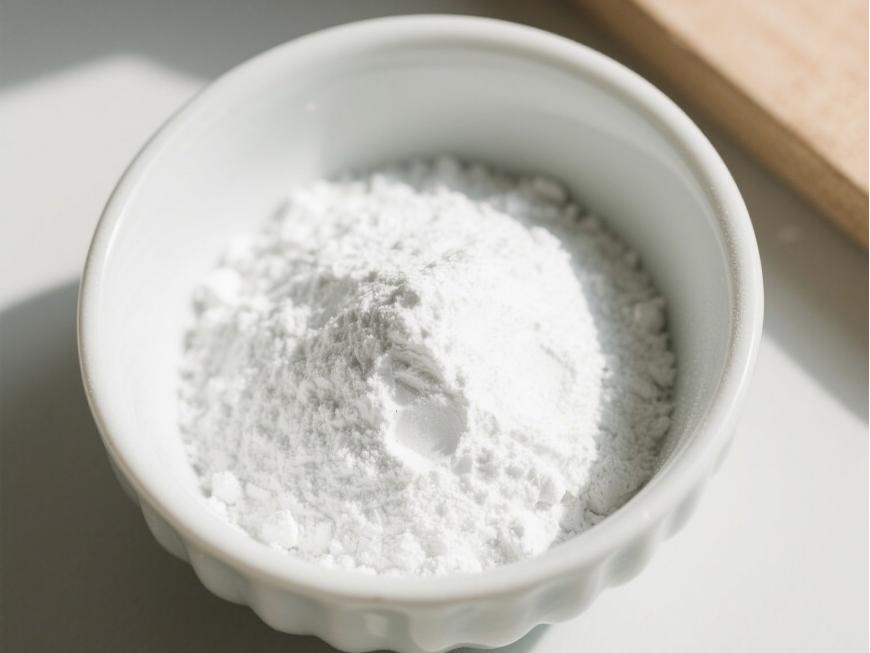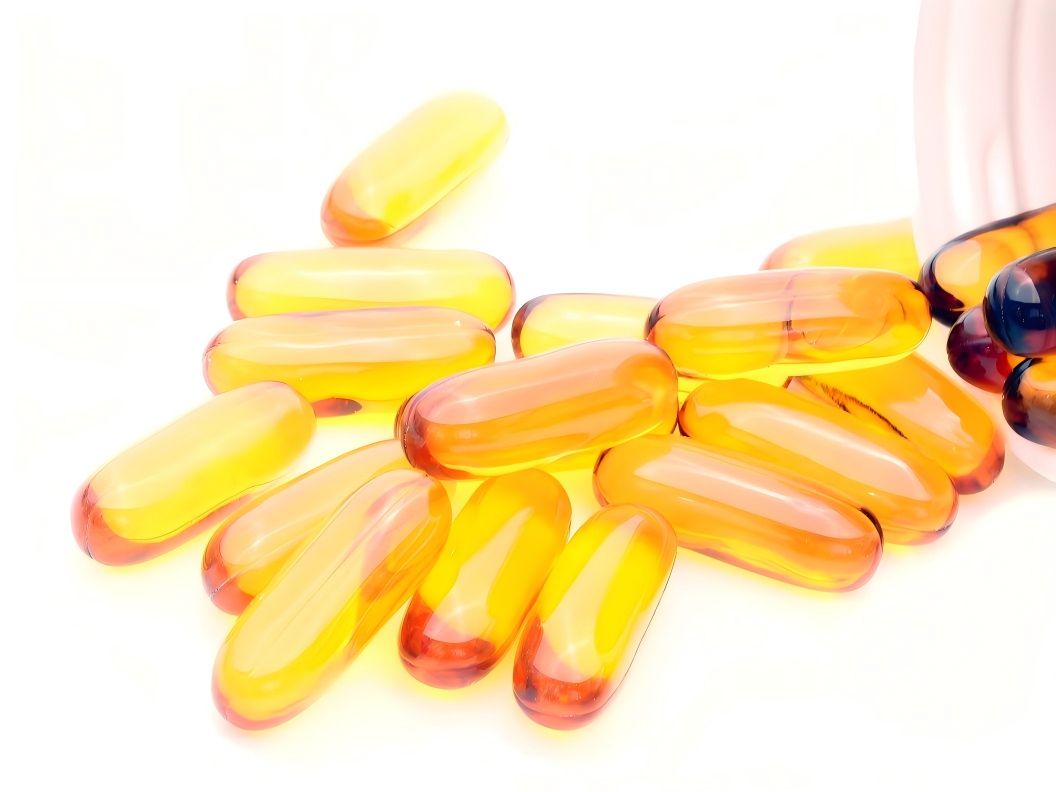What Is the Use of Hyaluronic Acid on Face Care Product?
Hyaluronic acid (HA) and its salts are physiologically active substances widely present in the human body. They are high-molecular-weight polysaccharides composed of disaccharide units formed by the linkage of glucuronic acid and N-acetylglucosamine. Commercially available hyaluronic acid is derived from extraction or fermentation and is primarily used as a pharmaceutical, dietary supplement, and excipient. Its molecular weight ranges from several thousand to millions, and it is used to alleviate symptoms of dry eye syndrome and osteoarthritis, assist in ophthalmic surgeries, reduce post-operative adhesions, delay aging, and provide sun protection, among other applications. It demonstrates significant efficacy and good tolerability.
Recent studies have shown that hyaluronic acid demonstrates significant therapeutic efficacy in dermatological applications such as wound healing, eczema treatment, and cosmetic fillers, with fewer adverse reactions compared to other materials.
1 Applications of Hyaluronic Acid in the Treatment of Skin Diseases
1.1 Promoting Skin Wound Healing
Hyaluronic acid is an important component of the extracellular matrix. In the early stages of trauma, local hyaluronic acid concentrations are significantly elevated, and hyaluronic acid at the trauma site plays a crucial role in wound healing. Its mechanisms of action can be summarised as follows [1-3]: (1) Forms a clot with fibrinogen during wound healing, providing structural support; (2) Regulates inflammatory responses by enhancing phagocytic activity of granulocytes; (3) Promotes angiogenesis through the degradation of low-molecular-weight hyaluronic acid; (4) Regulates collagen synthesis; (5) Facilitates wound debridement; accelerating the proliferation of epithelial cells on the wound surface; (6) exhibiting hydrating properties, consistent with the modern theory of moist wound healing.
Hyaluronic acid has been shown to promote wound healing in both acute and chronic wounds, including venous ulcers, diabetic ulcers, pressure ulcers, and traumatic injuries, and this effect has been confirmed by numerous clinical trials. Humbert[4], Dereure[5], and Meaume[6] observed the clinical efficacy of hyaluronic acid in the treatment of lower limb venous ulcers, and found that hyaluronic acid significantly outperformed the control group in terms of wound reduction rate, ulcer healing rate, and pain relief. The treatment was safe and effective for lower limb venous ulcers. Abbruzzese et al. [7] evaluated the clinical efficacy of Vulnamin® gel (containing hyaluronic acid and amino acids) in the treatment of diabetic ulcers. The results showed that the ulcer healing rate, healing time, patient satisfaction, and ulcer area reduction rate were significantly higher in the treatment group than in the control group. There were no significant differences in infection rates or other adverse reactions between the two groups, indicating that Vulnamin® gel is safe and effective for the treatment of diabetic ulcers.
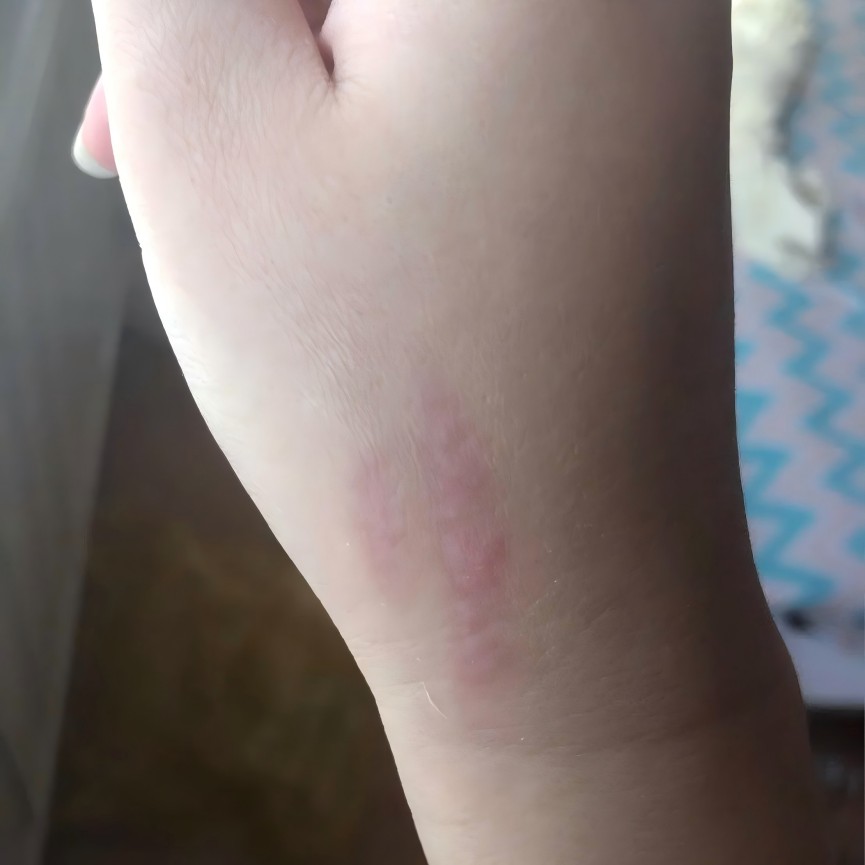
Barrois et al. [8] observed the clinical efficacy of Ialuset® ointment (active ingredient: hyaluronic acid) in the treatment of 21 patients with stage II, III, and IV stage pressure ulcers. The results showed that after 3 weeks of treatment, the average wound area decreased by 4 cm², 65% of patients had a reduction in ulcer area of ≥50%, and 45% of patients had an increase in epithelialisation of ≥50% compared to the initial damaged area. Almost all patients had good treatment outcomes and with good tolerability. Voinchet et al. [9] evaluated the efficacy of hyaluronic acid in treating acute wounds. Results showed that at the treatment endpoint, wound area decreased from 556 mm² to 169 mm², with an average reduction of 70%, 56% of patients achieved complete healing, and 84% of patients had minimal wound exudate. The treatment was well tolerated, with high satisfaction rates among nurses and patients.
1.2 Treatment of Eczema
Eczema, prurigo, and various inflammatory skin diseases exhibit increased hyaluronic acid levels in negative-pressure blister fluid following treatment with ultraviolet B and retinoic acid [10]. Tomoyuki et al. [11] used immunohisto-chemical methods to find increased hyaluronic acid expression in blister fluid from the acantholytic layer of acute eczema. In 2004, Atopiclair® cream, with hyaluronic acid as its main active ingredient, was approved in the United States and the European Union for relieving burning, itching, and pain associated with eczema and various dermatitis. A clinical trial involving 218 adult patients with mild to moderate eczema showed that by day 22 of treatment with Atopiclair®, 77% of patients in the treatment group reported significant improvement in overall evaluation, significantly superior to the placebo group (21%) [12], and the cream also demonstrated significant efficacy in alleviating skin itching symptoms [13].

2 Applications of Hyaluronic Acid in Skin Beauty
2.1 Skin Fillers
Hyaluronic acid injection fillers for beauty purposes have been in use for over a decade. In 1999, Sweden's Q-Med Company developed and launched the cross-linked hyaluronic acid beauty filler Restylane®, which received FDA approval in 2003. It effectively improves skin contours and eliminates skin depressions caused by scars, wounds, and wrinkles. Currently available brands include China's Huaxi Biotech's Runbaiyan™, the United States' Hvlaform, Canada's Juvederm, and the United Kingdom's Hyalite, among others [14].
The primary applications of cross-linked hyaluronic acid fillers include: (1) eliminating facial wrinkles and folds, such as crow's feet around the eyes, nasolabial folds, vertical wrinkles between the eyebrows; (2) lip augmentation; (3) filling local depressions caused by facial atrophy; (4) certain facial scars, such as those left after acne healing [15]. Its characteristic is that it is a ‘long-lasting filler’ rather than a ‘permanent’ filler [16]. During clinical application, hyaluronic acid may cause temporary side effects such as redness and swelling. However, based on overall clinical feedback, it still has a significant advantage over semi-permanent and permanent fillers.
The efficacy of hyaluronic acid injection for aesthetic filling has also been confirmed by clinical trials [17]: A study involving 55 patients and 125 wrinkle-filling procedures showed that wrinkles at all injection sites improved immediately after injection. Follow-up at 1, 2, and 3 months showed maintenance rates of 98.3%, 91.2%, and 83.3%, respectively; at 6–12 months, 70.5% of injection sites maintained improved effects, and after 12–18 months, 24.6% of the injection sites maintained the improved effects. In a study involving 32 patients who received hyaluronic acid dermal fillers for facial wrinkle filling, all injection sites showed significant improvement immediately after injection. Follow-up at 3, 6, and 12 months revealed that the rates of maintained improvement were 88.6%, 82.5%, and 78.5%, respectively. No acute or chronic allergic reactions, infections, granulomas, or vascular embolisms were observed during the treatment process in both clinical trials. Hyaluronic acid, as a substitute for silicone gel as a filler material, demonstrated superior visual effects compared to silicone gel and showed no adverse reactions after one year of implantation.
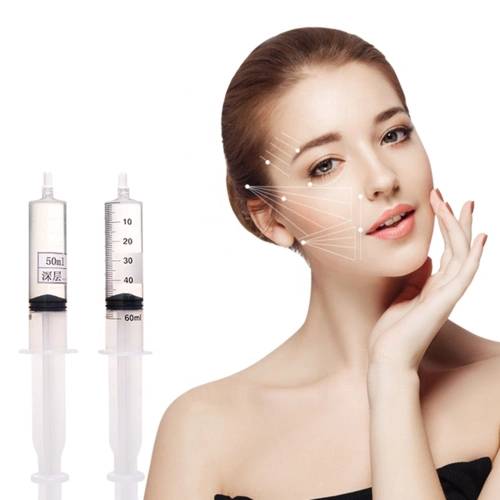
2.2 Dietary supplements improve skin hydration
Oral hyaluronic acid, after digestion and absorption, increases the precursors for hyaluronic acid synthesis in the body, thereby increasing the synthesis of hyaluronic acid in the skin and other tissues. This repairs the body's moisture retention system, helps lock in moisture throughout the body, increases skin hydration, softens the skin's keratin layer, improves blood circulation and metabolism on the skin surface, and exerts a holistic beauty effect from the inside out [18].
Turley et al. [19] conducted human and animal trials with oral hyaluronic acid. Volunteers and rats were administered a 2% hyaluronic acid solution at a dose of 30 mg/kg body weight, and blood samples were collected at different time points to measure hyaluronic acid concentrations. The results showed that after oral administration of hyaluronic acid, serum hyaluronic acid concentrations in volunteers increased from 4 to 12 hours and returned to normal levels within 12 to 24 hours. In rats administered hyaluronic acid via gavage, serum hyaluronic acid concentrations reached a peak at 1 hour, decreased from 1 to 6 hours, and then steadily increased from 6 to 24 hours. The explanation for the double peak in the drug-time curve in rats is as follows: part of the hyaluronic acid was absorbed into the blood via gastric absorption, forming the initial concentration peak within the first hour. This portion of hyaluronic acid was rapidly cleared from the blood, resulting in a decrease in concentration between 1 and 6 hours. The hyaluronic acid not absorbed by the stomach entered the small and large intestines, where it was absorbed, leading to a steady increase in concentration between 6 and 24 hours. Similar experimental results were obtained by Jiang Qiuyan in China [20].
The efficacy of improving skin moisture content has also been confirmed by clinical studies: Japanese QP Company [21] conducted a study on 22 individuals with dry and rough skin. They were administered 240 mg of high-purity hyaluronic acid tablets daily. After 6 weeks, compared with the placebo group, the test group showed significant improvement in dry skin symptoms, with smoother and softer skin, and increased skin moisture content. Pang Xiaoyang et al. [22] conducted a human efficacy trial using a skin-moisturising and beautifying product formulated with chicken comb extract and other ingredients. Participants took 4 tablets once daily for 30 days. Compared with the control group, skin moisture levels in the test group significantly increased. In a human clinical study by Yamamoto [23], participants took ECM-E for 3–24 days, most participants reported smoother, more radiant skin, with noticeable beauty effects on the face and entire body.
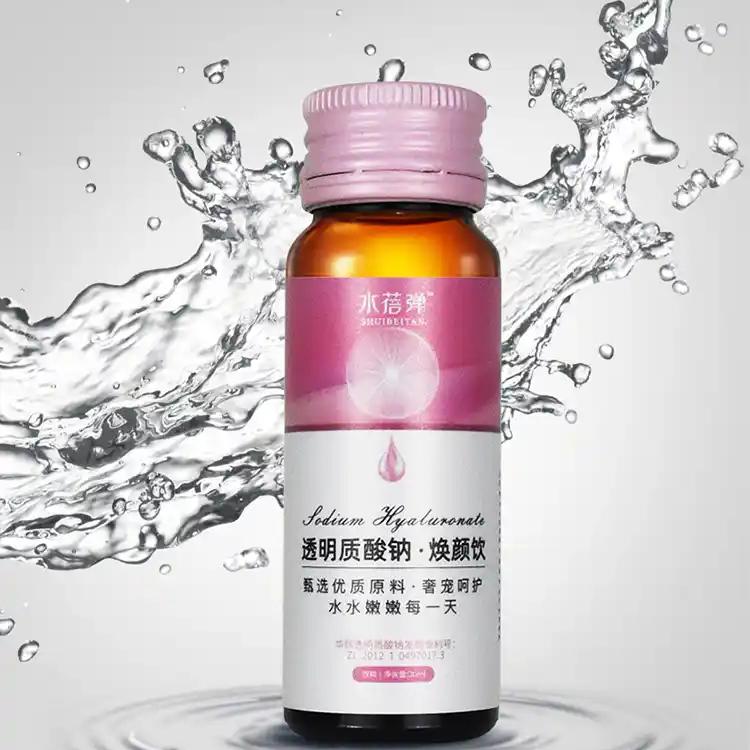
Currently, beauty and health supplements containing hyaluronic acid available on the domestic and international markets include Rui'er Water Source Capsules by Jilin Hongjiu Biotechnology Co., Ltd.; Natural Hyaluronic Acid by Life Time Co., Ltd.; Hyaluronic ECM·E105 developed by the Japanese Hyaluronic Acid Research Institute; Runli EX produced by Japanese Eishin Shokai Co., Ltd.; Hyaluronic Acid + Biocell Collagen by Source Naturals Co., Ltd.; and Beijing Shenyuan Bio-Health Oral Liquid, among others. The formulations include tablets, capsules, and oral liquids.
2.3 Moisturising and sunscreen properties in cosmetics [18]
The moisture-retaining effect of hyaluronic acid is one of its most important physiological functions, with a theoretical moisture-retaining capacity of over 500 mL/g. In connective tissue, its actual moisture-retaining capacity is approximately 80 mL/g. Compared to other commonly used moisturisers such as glycerol, sorbitol, and sodium pyrrolidone carboxylate, hyaluronic acid is less affected by environmental humidity. Experiments have shown that hyaluronic acid exhibits the highest relative moisture absorption at low relative humidity (33%) and the lowest relative moisture absorption at high relative humidity (75%). This unique property adapts to the skin's requirements in different seasons and humidity environments, making it an ideal intelligent moisturiser.
Hyaluronic acid not only has excellent moisture-retaining properties but also provides effective sun protection and repair. When skin is exposed to intense sunlight, UV rays cause photodamage, such as redness, darkening, and peeling. Hyaluronic acid promotes epidermal cell proliferation and differentiation while removing oxygen free radicals, thereby facilitating skin regeneration in damaged areas. Its mechanism of action differs from that of UV absorbers commonly used in sunscreens, as it has a synergistic effect, simultaneously reducing UV transmission and repairing UV-induced skin damage, thereby providing dual protection. When the skin suffers mild burns, applying a hyaluronic acid-containing cosmetic solution to the affected area can alleviate pain and accelerate healing [24]. In vitro experiments have shown that hyaluronic acid also has good repair effects on ethanol-induced skin cell apoptosis [25].
According to statistics, the types of cosmetics containing hyaluronic acid on the market include creams, lotions, toners, essence capsules, masks, shower gels, hand washes, powders, lipsticks, shampoo and conditioners, and mousses.
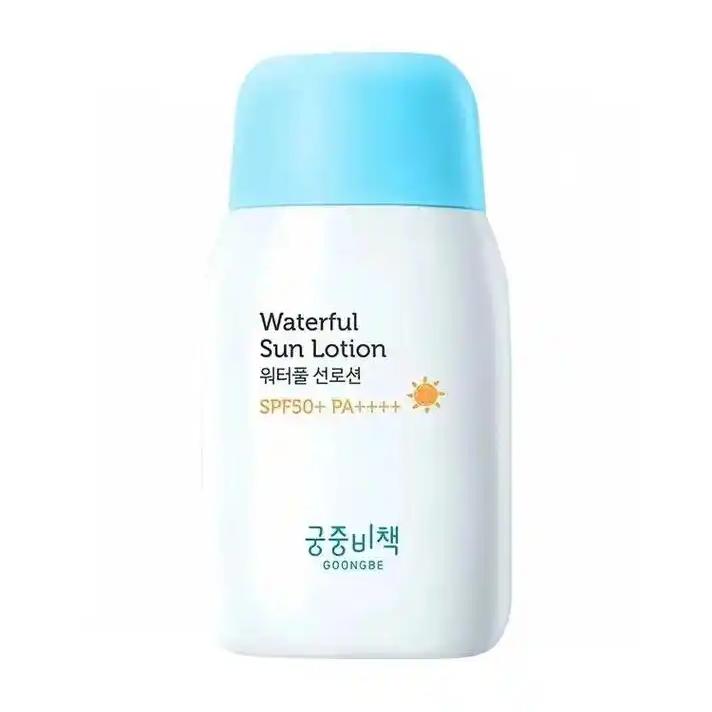
3 Applications of Hyaluronic Acid in the Matrix of Dermatological Products
Hyaluronic acid is a white granular or powdery solid with no odour. It swells in water to form a clear liquid or gel. Laurent described the flow state of hyaluronic acid in water as ‘random, loose, and having a certain degree of rigidity,’ exhibiting excellent properties such as viscoelasticity and non-Newtonian fluid characteristics. Studies have shown that the cytotoxicity of hyaluronic acid is significantly lower than that of carbomer. As a bulking agent, it has been widely used in ophthalmic products, and its application in dermatological products is gaining traction.
Brown et al. [26] found that radioactively labelled hyaluronic acid not only penetrates the skin of nude mice and humans but also transports diclofenac sodium to the epidermal layer of the skin. Compared with water, chondroitin sulphate, and sodium carboxymethyl cellulose, hyaluronic acid minimises the transdermal absorption of diclofenac sodium, forming a drug reservoir in the epidermal layer of the skin, reducing systemic absorption and thereby minimising systemic side effects. Additional studies have shown that, 24 hours after topical application, the amount of diclofenac sodium transported to the epidermis by the hyaluronic acid vehicle group was twice that of the vehicle groups using water and sodium carboxymethyl cellulose. Hyaluronic acid exhibits similar effects on ibuprofen, clindamycin phosphate, and cyclosporine. Clinical trials of a 2.5% hyaluronic acid-based diclofenac sodium gel (Solaraze®) demonstrated good tolerability, safety, and efficacy in the treatment of actinic keratosis, with no serious adverse reactions.
In addition to the previously mentioned products that promote wound healing, hyaluronic acid as a matrix is also used in Solaraze®, tinidazole hyaluronic acid gel, and nimesulide hyaluronic acid gel [27-28].
4 Conclusion
Since its isolation in 1934, hyaluronic acid has been widely applied in clinical settings, with rapid advancements in research. Currently, hyaluronic acid has found extensive applications in ophthalmology, orthopaedics, cosmetics, skincare, and wound healing. As research continues to deepen, it has been discovered that hyaluronic acid has a targeted effect in skin drug delivery systems and can reduce adverse drug reactions. It is believed that in the near future, its application as a pharmaceutical matrix in dermatology will have a broad prospect.
References
[1] Ling Peixue. Hyaluronic Acid [M]. Beijing: China Light Industry Press, 2001: 84–85.
[2] Zhao Jingyu, Chai Jiake. Research Progress on the Effects of Exogenous Hyaluronic Acid on Wound Healing [J]. Chinese Journal of Injury and Reconstructive Surgery, 2011, 6(1): 65–67.
[3] Yuan Xiangmin, Ling Peixue, Wang Fengshan, et al. Research Overview of Sodium Hyaluronate in the Treatment of Burns and Scalds [J]. Chinese Journal of Biochemical Drugs, 2003, 24(2): 107-108, Appendix I-II.
[4] Humbert P, Mikosinki J, Benchikhi H, et al. Efficacy and safety of a gauze pad containing hyaluronic acid in treatment of leg ulcers of venous or mixed origin: a double-blind, randomised, controlled trial[J] . Int Wound J, 2013, 10(2): 159-166.
[5] Dereure O, Czubek M, Combemale P. Efficacy and safety of hyaluronic acid in treatment of leg ulcers: a double-blind RCT[J]. J Wound Care, 2012, 21(3): 131-132, 134-136, 138-139.
[6] Meaume S, Ourabah Z, Romanelli M. Efficacy and tolerance of a hydrocolloid dressing containing hyaluronic acid for the treatment of leg ulcers of venous or mixed origin[J]. Curr Med Res Opin, 2008, 24(10): 2729-2739.
[7] Abbruzzese L, Rizzo L, Fanelli G, et al. Effectiveness and safety of a novel gel dressing in the management of neuropathic leg ulcers in diabetic patients: a prospective double-blind randomized trial[J]. Int JLow Extrem Wounds, 2009, 8(3): 134-140.
[8] Barrois B, Carles M, Rumeau M, et al. Efficacy and tolerability of hyaluronan (ialuset) in the treatment of pressure ulcers: a multicentre, non-randomised, pilot study[J]. Drugs R D, 2007, 8 (5): 267-273.
[9] Voinchet V, Vasseur P, Kern J. Efficacy and safety of hyaluronic acid in the management of acute wounds[J]. Am J Clin Dermatol, 2006 ,7(6):353-357.
[10] Zhang Rongxin, Wang Aoxue, Tu Caixia. Advances in the application of hyaluronic acid in dermatology [J]. Chinese Journal of Bioaesthetics, 2009, (4): 64-69.
[11]Ohtani T, Memezawa A , Okuyama R, et al. Increased hyaluronan production and decreased E-cadherin expression by cytokine- stimulated keratinocytes lead to spongiosis formation[J]. J Invest Dermatol, 2009, 129(6): 1412-1420.
[12] Abramovits W, Hebert AA, Boguniewicz M, et al. Patient-reported outcomes from a multicenter, randomized, vehicle-controlled clinical study of MAS063DP (Atopiclair) in the management of mild-to-moderate atopic dermatitis in adults[J]. J Dermatolog Treat, 2008, 19(6): 327-32.
[13] Veraldi S, De Micheli P, Schianchi R, et al. Treatment of pruritus in mild-to-moderate atopic dermatitis with a topical non-steroidal agent[J]. J Drugs Dermatol, 2009, 8(6): 537-539.
[14] Liu Jing. Application of hyaluronic acid in skin tissue engineering [J]. Science and Technology Information, 2010, (32): 352-353.
[15] Guo Xueping, Liu Aihua, Ling Peixue. Application of hyaluronic acid in cosmetics, health foods, and soft tissue fillers [J]. Food and Medicine, 2005, 7(1A): 20-23.
[16] Zhang Yankun, Jin Jingshun. A Functional Cosmetic Ingredient: Hyaluronic Acid [J]. Daily Chemical Industry, 2004, 34(02): 111-114.
[17] Zhang Jianmin. Progress in Clinical Research on Hyaluronic Acid-Based Skin Fillers in China [J]. Chinese Pharmaceutical Information, 2009, 25(12): 9-10.
[18] Yang Suzhen, Kan Hongling, Zhang Tianmin. Application of Hyaluronic Acid in Cosmetics [J]. Food and Drug, 2010, 12(7): 275-278.
[19] Turley E A ,Asculai S S .Oral administration of effective amounts of forms of hyaluronic acid:WO ,972505l[P]. 1997-07- 17.
[20] Jiang Qiu-yan, Ling Pei-xue, Cheng Yan-na, et al. Distribution of oral hyaluronic acid in animals [J]. Chinese Journal of Biochemical Drugs, 2008, 82(2): 73-76.
[21] Osami K, Wataru O, Wakako S, et al. Clinical effects of hyaluronic acid diet for dry skin [J]. New Rem Clin, 2001, 50(5): 90-102.
[22] Pang Xiaoyang, Wang Lijie, Zhang Hui, et al. Clinical study of Yueji Liangli capsules [J]. Food and Drug, 2005, 7(6A): 30-31.
[23] Yamamoto H. Anti-aging and cosmetic effects of dietary hyaluronic acid (extracellular matrix extract)[J]. New Food Ind, 1998, 40 (11): 33-41.
[24] Chen Xiang'e, Ling Peixue. Hyaluronic acid and cosmetics[J]. Food and Drug, 2010, 12 (7): 278-280.
[25] Neuman M G, Orufia L, Coto G, et al. Hyaluronic acid signals for repair in ethanol-induced apoptosis in skin cells in vitro[J]. Clin Biochem, 2010, 43(10-11): 822-826.
[26] Brown MB, Jones SA. Hyaluronic acid: a unique topical vehicle for the localised delivery of drugs to the skin [J]. Journal of the European Academy of Dermatology and Venereology, 2005, 19(3): 308-318.
[27] Gao Zhenqiang, Du Jinfeng, Yang Jie. Preparation and quality control of tinidazole hyaluronic acid sodium gel[J]. Hebei Medicine, 2009(31):1, 107-108.
[28] Wang Zongchun, Lyu Nian, Shi Zhen. Preparation and quality control of nimesulide hyaluronic acid gel [J]. Chinese Journal of Hospital Pharmacy, 2002, 22(1): 54-55.


 English
English French
French Spanish
Spanish Russian
Russian Korean
Korean Japanese
Japanese